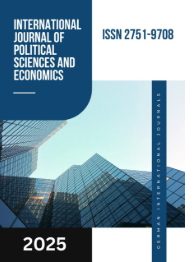THE EFFECTIVENESS OF MINIMALLY INVASIVE TECHNIQUES IN THE TREATMENT OF BENIGN PROSTATIC HYPERPLASIA (BPH)
DOI:
https://doi.org/10.55640/Keywords:
Benign Prostatic Hyperplasia, Minimally Invasive Surgery, HoLEP, UroLift, Rezūm Therapy, Lower Urinary Tract Symptoms, Prostate TreatmentAbstract
Benign Prostatic Hyperplasia (BPH) is a common urological condition affecting aging men, characterized by the noncancerous enlargement of the prostate gland. It often leads to lower urinary tract symptoms (LUTS) such as urinary frequency, urgency, weak stream, and nocturia, significantly impacting quality of life. The prevalence of BPH increases with age, affecting approximately 50% of men aged 50 and older, and up to 90% of men by age 80.
References
1.McVary KT. BPH: Epidemiology and comorbidities. Am J Manag Care. 2006;12(5 Suppl):S122-8.
2.Roehrborn CG. Male lower urinary tract symptoms (LUTS) and benign prostatic hyperplasia (BPH). Med Clin North Am. 2011;95(1):87-100.
3.Gupta A, Kapoor R. Contemporary surgical management of benign prostatic hyperplasia. Indian J Urol. 2017;33(3):168-174.
Downloads
Published
Issue
Section
License

This work is licensed under a Creative Commons Attribution 4.0 International License.
Authors retain the copyright of their manuscripts, and all Open Access articles are disseminated under the terms of the Creative Commons Attribution License 4.0 (CC-BY), which licenses unrestricted use, distribution, and reproduction in any medium, provided that the original work is appropriately cited. The use of general descriptive names, trade names, trademarks, and so forth in this publication, even if not specifically identified, does not imply that these names are not protected by the relevant laws and regulations.







